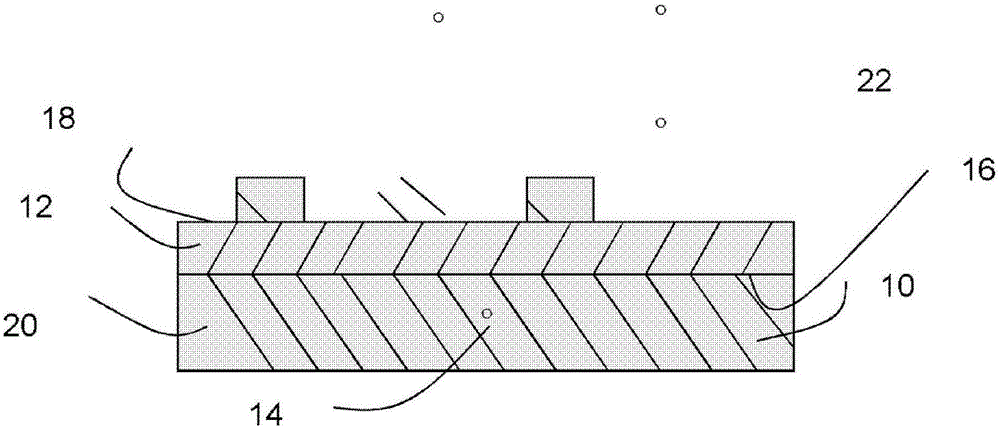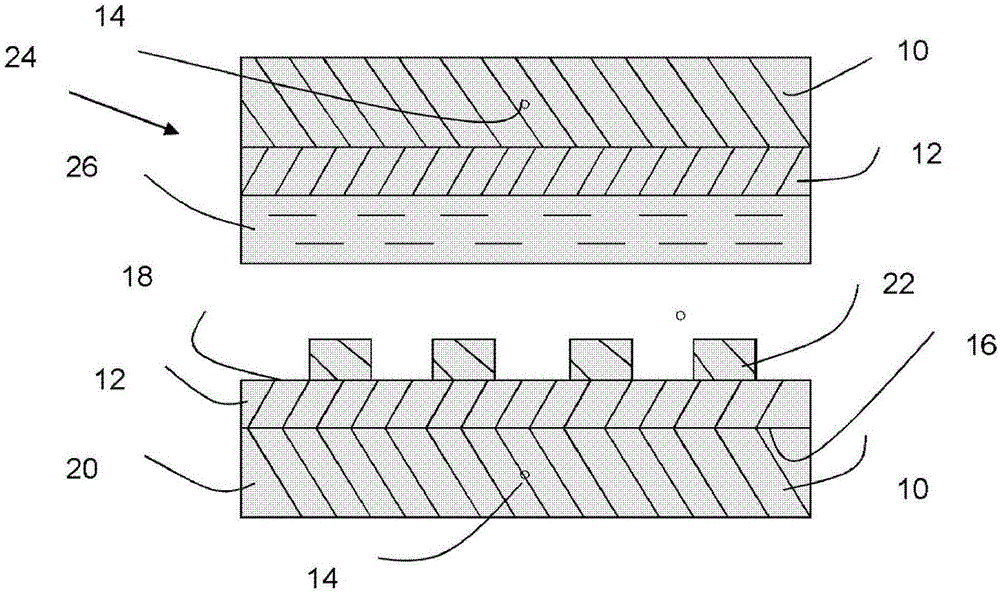Release soft substrate and manufacturing method thereof
A technology of flexible substrates and manufacturing methods, applied in the direction of sustainable manufacturing/processing, climate sustainability, final product manufacturing, etc., can solve problems such as high cost and cumbersome production procedures
- Summary
- Abstract
- Description
- Claims
- Application Information
AI Technical Summary
Problems solved by technology
Method used
Image
Examples
Embodiment 1
[0032] Preparation of the releasable flexible substrate of the present invention and its manufacturing method.
[0033]
[0034] Preparation of the first polyamic acid solution
[0035] Put 52.63 grams of ODA and 440 grams of DMAc as a solvent into a three-necked bottle, and then add 57.4 grams of PMDA after stirring until completely dissolved, wherein the monomer accounts for 20 wt% of the total weight of the reaction solution. Then, keep stirring at 25° C. and react for 25 hours. After the reaction, 2 wt % of silane compound and 20 wt % of fluorine-containing filler are added to obtain the first polyamic acid solution.
[0036] Preparation of the second polyamic acid solution
[0037]Put 71.67 g of TFMB and 412.5 g of DMAc as a solvent into a three-neck flask, stir until completely dissolved, then add 65.84 g of BPDA, wherein the monomer accounts for 25 wt% of the total weight of the reaction solution. Then, the second polyamic acid solution was obtained by continuously ...
Embodiment 2
[0043] The steps of Example 1 were repeated, but the components of the first polyamic acid solution were changed to 5wt% silane compound and 20wt% fluorine-containing filler.
Embodiment 3
[0045] The steps of Example 1 were repeated, but the components of the first polyamic acid solution were changed to 5 wt% silane compound and 5 wt% fluorine-containing filler.
PUM
| Property | Measurement | Unit |
|---|---|---|
| Peel strength | aaaaa | aaaaa |
Abstract
Description
Claims
Application Information
 Login to View More
Login to View More - Generate Ideas
- Intellectual Property
- Life Sciences
- Materials
- Tech Scout
- Unparalleled Data Quality
- Higher Quality Content
- 60% Fewer Hallucinations
Browse by: Latest US Patents, China's latest patents, Technical Efficacy Thesaurus, Application Domain, Technology Topic, Popular Technical Reports.
© 2025 PatSnap. All rights reserved.Legal|Privacy policy|Modern Slavery Act Transparency Statement|Sitemap|About US| Contact US: help@patsnap.com



